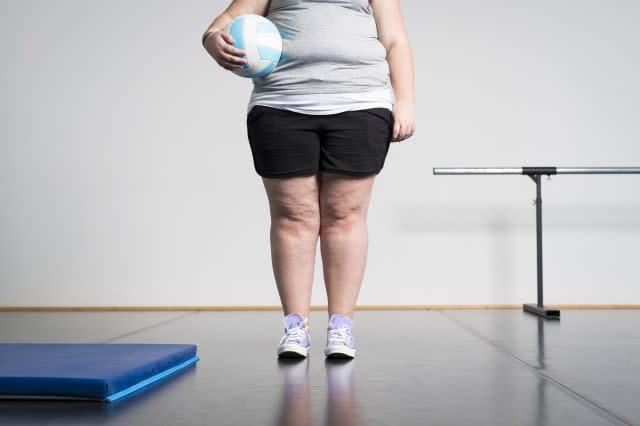Most parents of overweight children do not think they are too fat, report shows
Most parents of overweight children do not think they are too fat and children do not see themselves as overweight either, according to a new report.
The Health Survey for England, published by NHS Digital, found many parents were in the dark about how fat their children really are.
The study included interviews with 5,714 children aged 15 and under, alongside 8,034 adults. Nurses visited 5,378 adults and 1,297 children.

The findings showed that the majority of overweight and obese children also were not aware they were too heavy.
Only 26% of overweight and obese children aged eight to 15 described themselves as too heavy, while 41% thought they were about the right weight and 33% were not sure.
Meanwhile, most overweight children were described as being about the right weight by their mothers (91%) and fathers (80%).
There was more realisation when children fell into the obese category, with 51% of mothers and 56% of fathers of obese children saying their child was too heavy.
But 48% of mothers and 43% of fathers still thought their obese child was about the right weight.
In 2015, 28% of children aged two to 15 were either overweight (14%) or obese (14%).
The report found that most children aged eight to 15 were not trying to change their weight (69%), but 24% were trying to lose weight.
Some 60% of obese children were trying to shed pounds as were 38% of those who were overweight but not obese.
The report also found obesity had not changed since 2010 among adults, with 27% of men and women obese and a further 41% of men and 31% of women overweight.
But Cancer Research UK said historical NHS Digital data showed that people in England had put on almost 1.5 billion pounds in weight over the last 20 years.
A man's average weight had increased by 12lbs over the last 20 years, while women's has gone up 10lbs.
Alison Cox, director of cancer prevention at Cancer Research UK, said: "This excessive weight is putting the NHS under enormous strain and the health of the nation at risk.
"Being overweight or obese is the second largest preventable cause of cancer after smoking, so it's important that people are given a helping hand to maintain a healthy weight.
"Making small changes in eating, drinking and being physically active that you can stick to in the long-term is a good way to reach a healthy weight and stay there.
"And the Government can do more to help us all make healthier choices. The sugar tax is a great start and could prevent millions of cases of obesity. But the Government also needs to protect the next generation from junk food adverts on TV before the 9pm watershed.
"There's no silver bullet; we need a range of measures that work together to tackle childhood obesity.
"We have an opportunity to stop this epidemic in its tracks and we need to act now."
The new report showed some men and women have dangerously high waist measurements, putting them at increased risk of health problems including Type 2 diabetes.
Overall, 35% of men and 47% of women have very high waist measurements (over 102cm for men and 88cm for women), mostly in middle age, the report said.
A statement from the Obesity Health Alliance, a coalition of over 30 charities, royal medical colleges and campaign groups, said: "Obesity is still an urgent public health epidemic costing our national health service billions of pounds every year.
"Prevalence hasn't changed much but the majority of adults remain worryingly obese or overweight.
"As our waistlines continue to increase, so do the chances of developing Type 2 diabetes, cancer, cardiovascular disease and other devastating health conditions.
"We must take bold action now by bringing in measures like the soft drinks industry levy, reducing the sugar, salt and fat from everyday foods and restricting junk food marketing to children."
The new report also found that most children were not doing enough exercise. Recommendations are for children aged five to 15 to be moderately active for at least an hour every day, such as doing something that gets them warmer, makes them breathe harder and their heart beat faster.
Outside of school activities, only 22% are hitting this target, although it is up slightly on 2012.
Some 9% of children aged two to 15 were also described as sedentary - such as watching TV - for six hours or more per day on weekdays (outside of school time). The figure was 19% on weekends.


